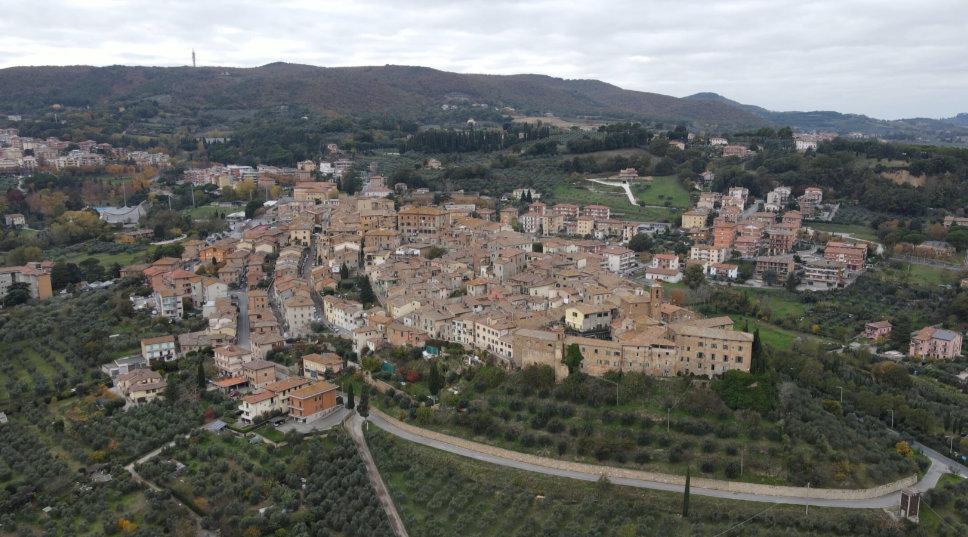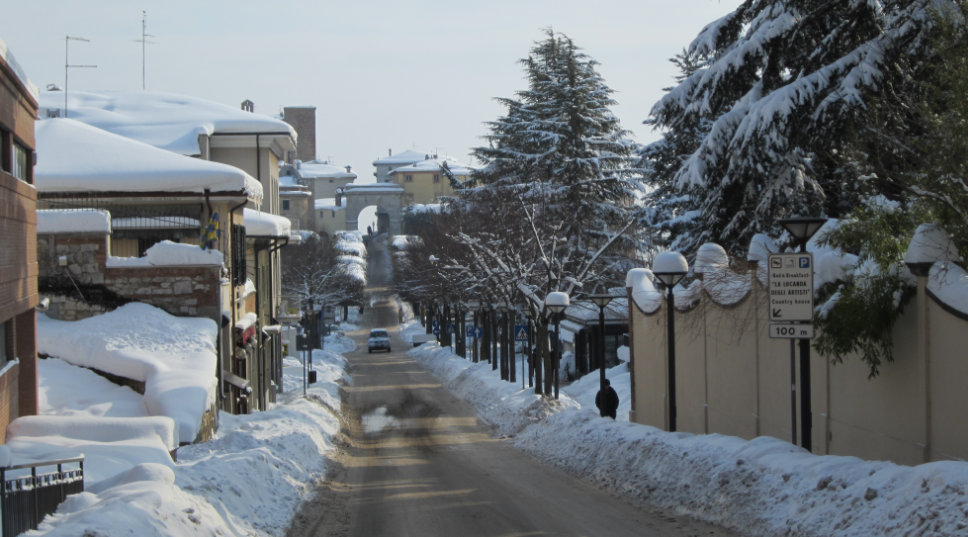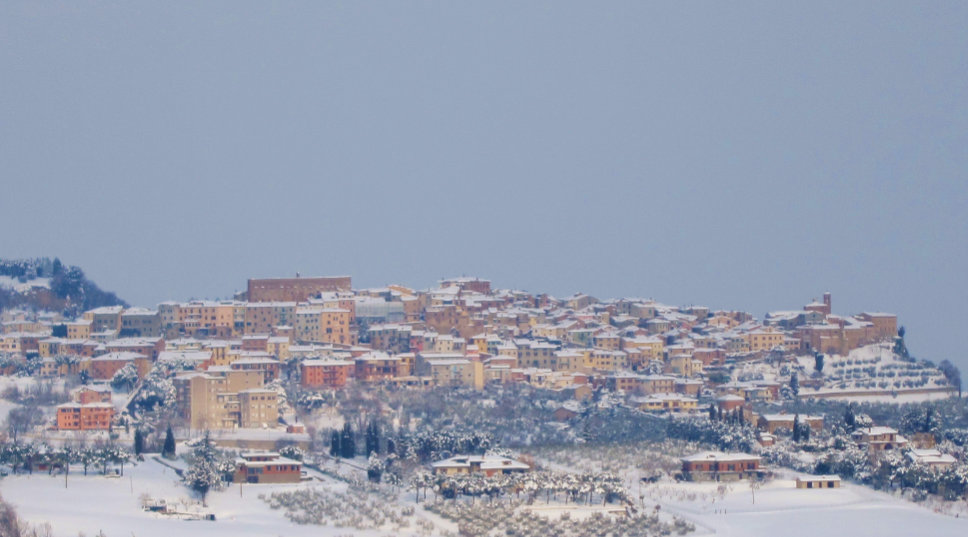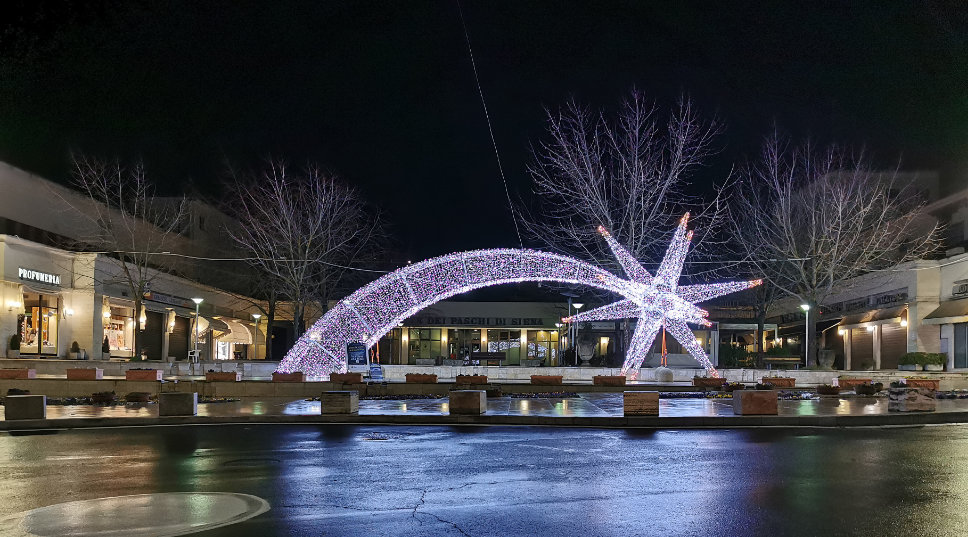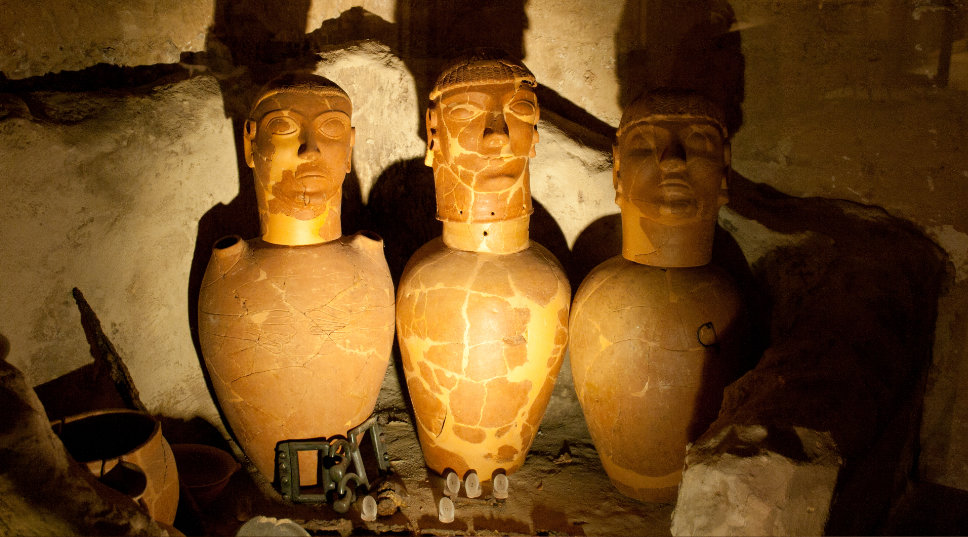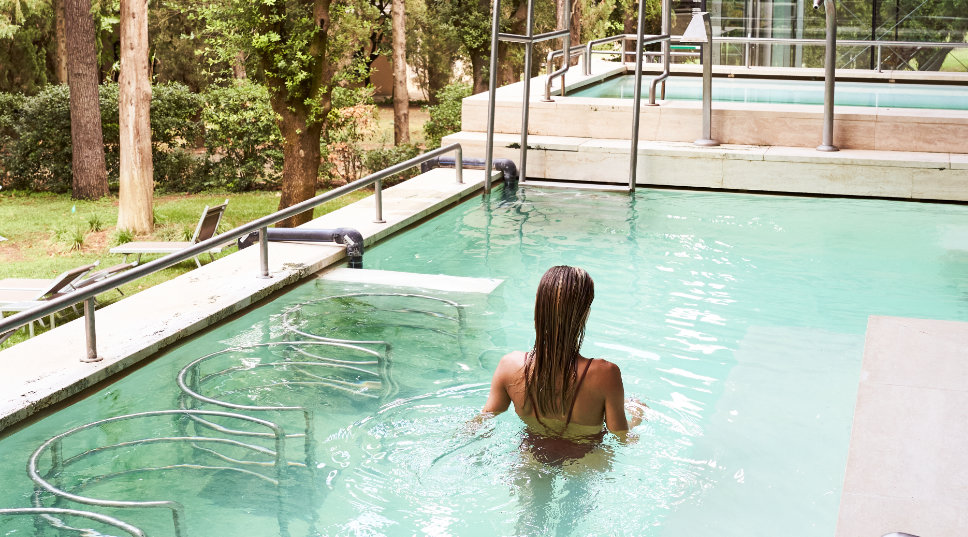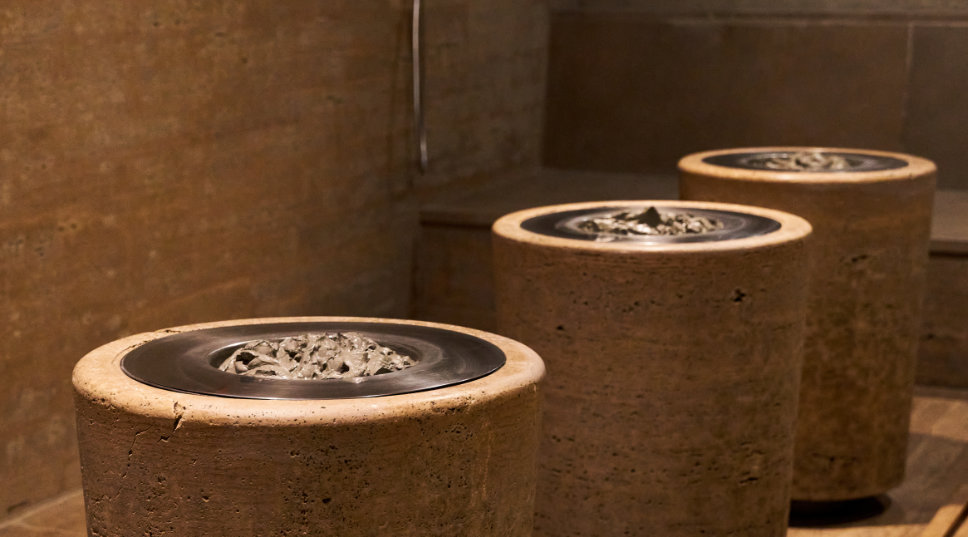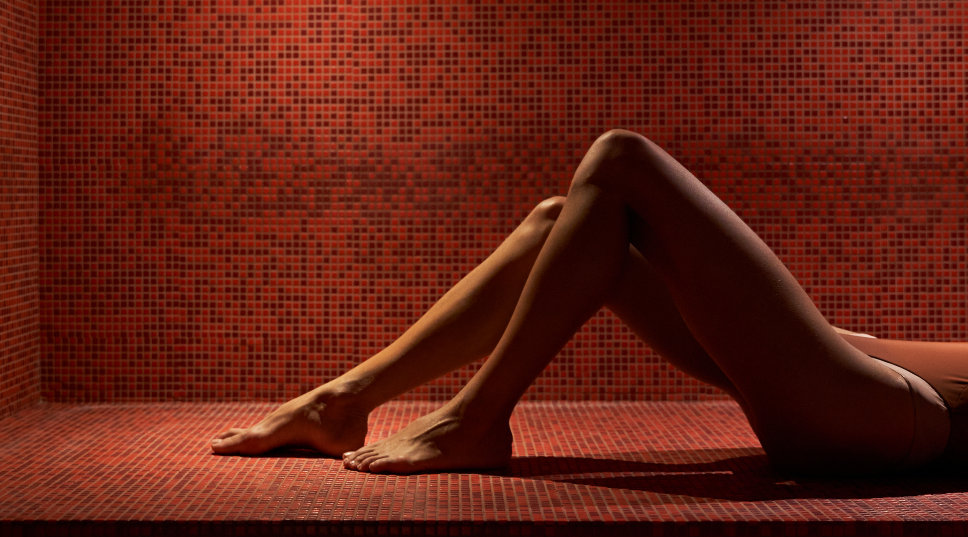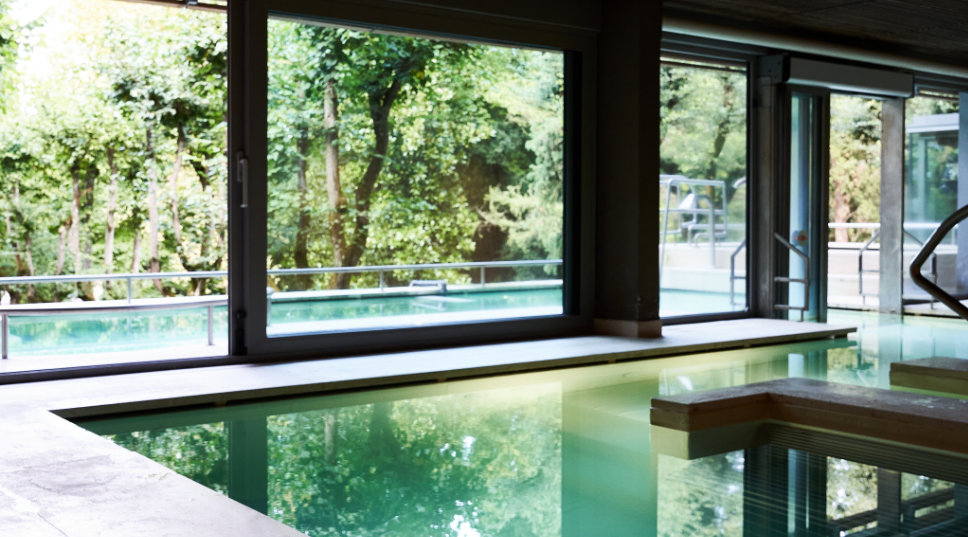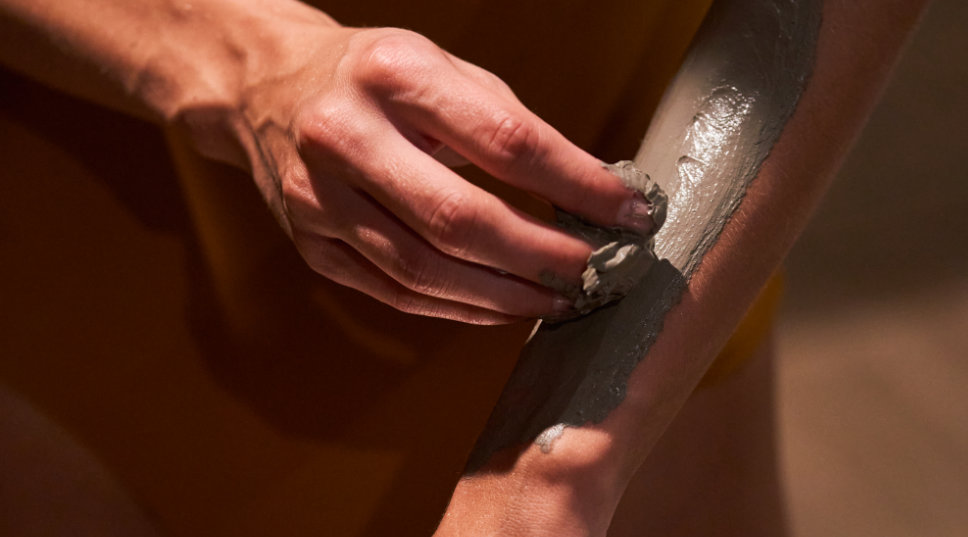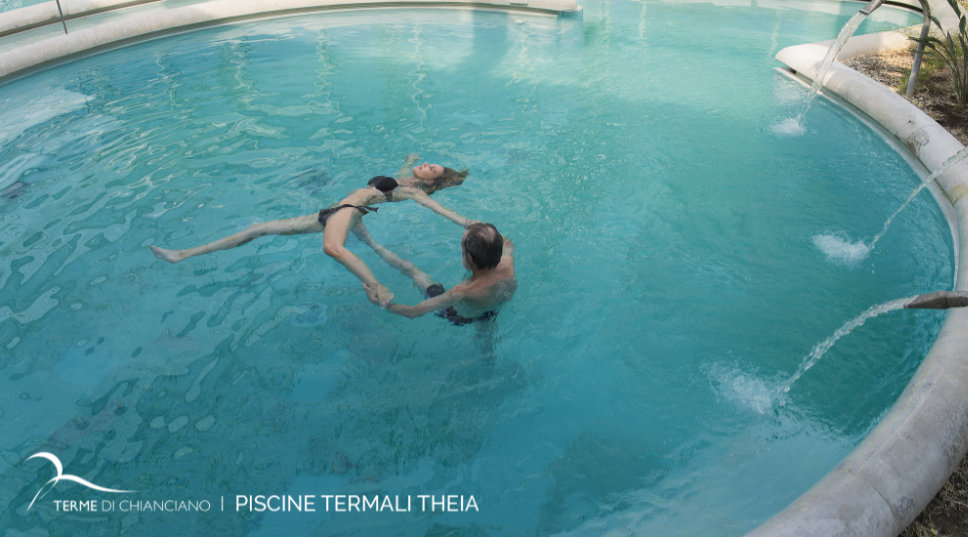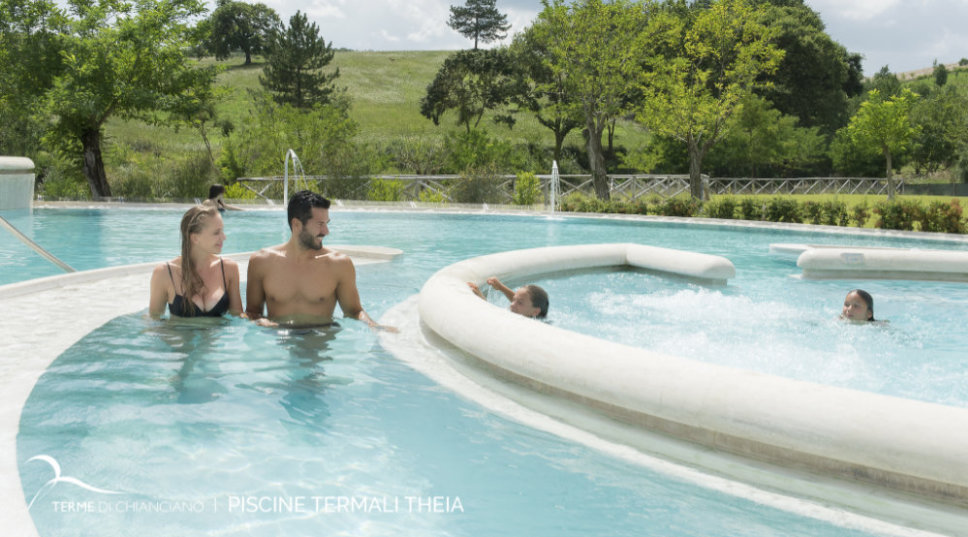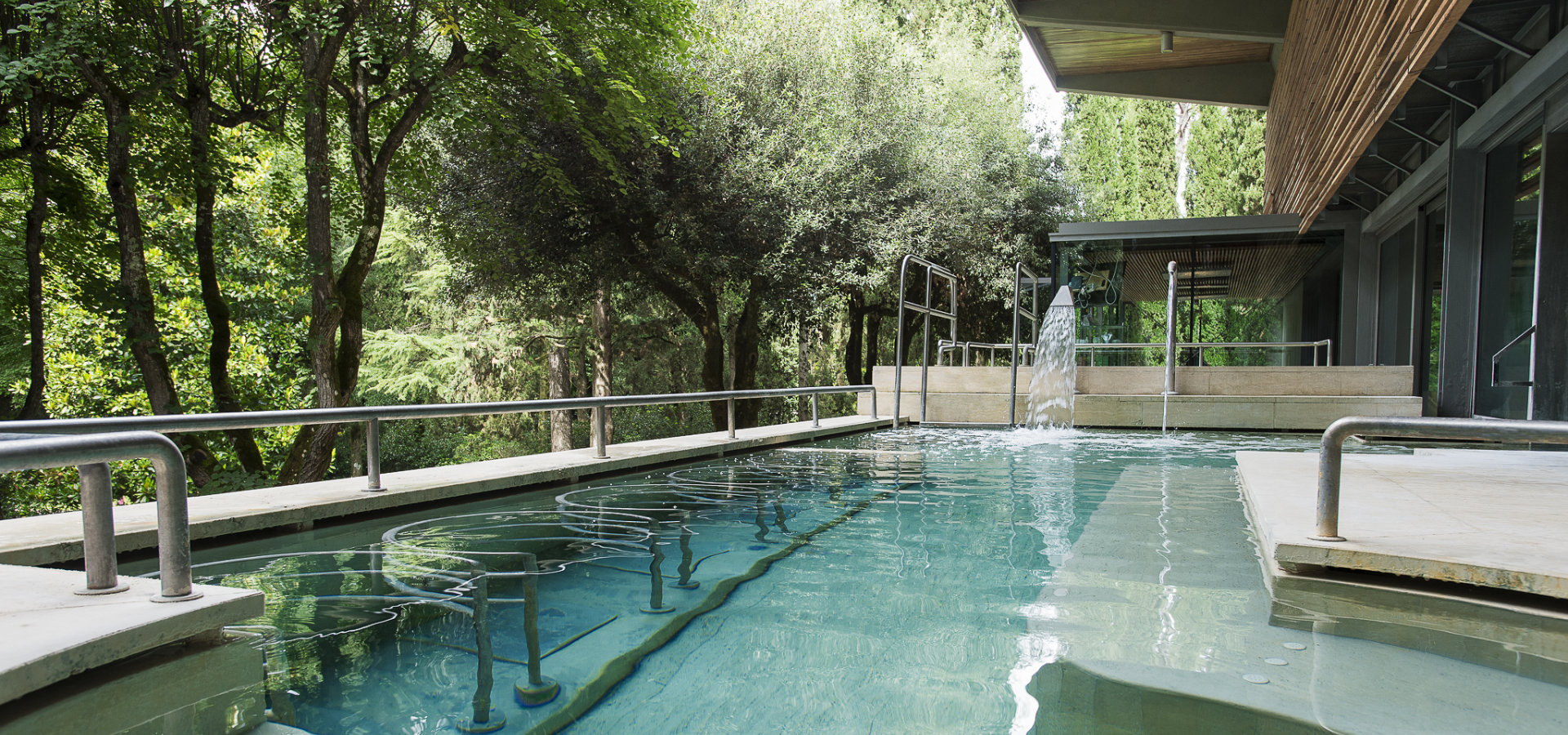Chianciano Terme
On present day Chianciano Terme has two distinct areas. Chianciano Vecchia (Ancient Chianciano)
is located a top of a small hill. The Porta Rivellini, with its elegant Renaissance structure,
is the main gateway into the town at the end of the Via Dante.
Inside the historical center there are the Church of the Immacolata, restored in 1588 after the Florentine conquest of Siena, the museum of the Collegiata, and the Church of San Giovanni Battista,
a Romanesque-Gothic building with a notable portal.
Outside the walls, the church of Madonna della Rosa takes its name ("Madonna of the Rose") from a fresco portraying the Virgin giving a Rose to the Child,
the work of a 15th-century Sienese master.
The nucleus of the modern quarter, the Terme, has instead grown around the thermal springs and stretches northward in a
crescent shape along the Viale della Libertà towards the older city.
Today, this section is considered among the finest health resorts in Italy with its parks, numerous hotels and especially its therapeutic water for liver.
Among the more notable water springs are also the Fucoli, and Sillene. (From Wikipedia).
The spas of Chianciano also have special spaces dedicated to well-being. There are 5 paths available in the Terme
Sensoriali e 600 square meters of external and internal pools at the Theia spas.
The archeological museum of Chianciano Terme is considered one of the most beautiful according to
the wealth of the artworks here shown, and their intriguing setting. It's a complete, still not boring, exposition of the Etruscan civilitazion.
